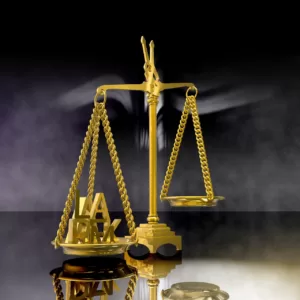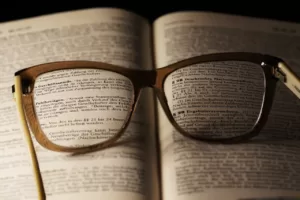Immovable property
The Immovable property define the section 3 (1) of transfer of property act 1882.
“Immovable property” does not include standing timber, growing crops or grass;
What is immovable property?
Indian law has adopted the division of property into movable and immovable, and not the technical division into real and personal property recognized by the English Law.
In India, the term is defined in
- T.P. Act.
- General Clauses Act.
- Indian Registration Act
T.P. Act.
The definition of immovable property is in two parts:
- Part I defines “immovable property”
- Part II is in definition of “attached to earth”.
Both have to be read together for knowing “immovable property”.
Definition : Immovable property includes three things namely—Land, benefits to arise out of land, and things attached to the earth.
It excludes three things, namely—standing timber, growing crops and grass.
The definition of the expression “immovable property” in this Act is a negative definition and is neither comprehensive nor exhaustive. It merely excludes “standing timber, growing crops and grass”.
The definition as given in the Act does not help the reader much more. It leaves him nowhere. It only says that three things, namely, standing timber, growing crops and grass are not immovable. What then is immovable?
The absence of any positive definition probably leaves the readers free to travel beyond the Act for getting at as to what is included in the term “immovable property”?
General Clauses Act :
Section 3, sub-section (26) of the General Clauses Act, 1897, which applies to this Act, defines immovable property as including “land”, “benefit arising out of land and things attached to the earth.
- Land : This does not include only the upper surface of the earth but is extensive enough to cover things below it, for example, minerals and sea, ocean and properties below in their bottom. These are all immovable property. Any interest in these or in respect of these or any other property in it are all immovable property. Besides, well, tube-well, rivers, ponds, tanks, stream, canal dug on surface whether natural or artificial and all interests in these would fall in enumeration of the term “land”. As such all are immovable property.
- “Benefits arising out of land” —These benefits are immovables. The examples of benefits are rent from the house, shops and jagir, revenue from agriculture, right to collect lac , leaf or other things from forest, trees, etc. Similarly right to collect tahbazari, Baithaki, from rural market, right to collect tax on ghats and bridges are all examples of benefits arising out of the land.
In the case of Ananda Behera versus State of Orissa AIR 1956, The right to catch the fish from the lake was considered to be the benefit arising out of land. And there for it is an immovable property.
In the case of Shantabai vs State of Bombay 1958, there was a right to enter upon the land and cut away the timbers for 12 year as per unregistered deed. A, whose husband B, the forest owner, had signed an unregistered document in the shape of a lease in A’s favour. As a result, A was granted the right to cut and utilise bamboo, teak, and fuelwood for a fee of Rs. 26,000 for a period of 12.5 years.
A lost her right to remove any more trees after the Madhya Pradesh Abolition of Proprietary Rights Act was passed in 1950. A filed a petition under Article 32 alleging that her contractual right has been denied, as well as a claim for damages. The question was whether the right was one of mobile or immovable property.
It was held that In a profit-a-prendre, one is given permission to enter the land with the intent of removing something rather than enjoying it. But under a lease the person who enjoys the property has no right to take it away. The terms lease and profit-a-prendre are not interchangeable hence that it is an immoveable property.
- ‘Things attached to earth” — This is also known as doctrine of pictures. If anything is attached to earth with the intention of making it to be the part of the land it would be called as an immovable property. It means three things—
- Things rooted in the earth, for example, trees and shrubs;
- Things embedded in the earth : . The word embedded is the definition means that the things or not just placed on the earth but the earth is dug up the soil is taken out then the foundation is lead and then again the soil is filled up. By this process we are trying to make the building in the part of earth and that to permanently.
- Things fastened for the permanent beneficial enjoyment of anything so embedded, for example, doors, windows, ceiling fans, pegs etc.
In the case of state of Orissa v/s Titagarh paper Mills AIR 1985 It was held that to find out whether the property is movable or immovable the entire circumstances along with the object and the contract as a whole should be examined. It should not be considered with reference to few words only if the intention from the contract is for permanent use, it will be immovable but otherwise it is movable.
Trees like Shisham, peak, bamboo or considered to be movable properties. In the case of Moti Singh v/s Devaki Singh, a fruit bearing tree was considered to be an immovable property. In the case of chic John Mohammed versus Uma Nath Mishra AIR 1962 Patna 44. Palm trees and dead trees were considered to be immovable properties. To check out that property is movable or immovable. We have to see contract plus intention plus question.
Indian Registration Act
[Section 2(6)1 “Immovable property includes; land, buildings, hereditary allowances, right to ways, lights, ferries, fisheries or any other benefit to arise out of land and things attached to the earth, or permanently fastened to anything which is attached to the earth but not standing timber, growing crops nor grass.
Three Exceptions to Immovable Property
—standing timber, growing crops and grass.
Growing crops are exception to thing rooted, these are not immovable. It includes grain crops, like wheat, barley, gram, vegetable plants, flower plants, creepers and sugar cane.
Grass—Movable property; In no case, immovable property Grass is movable property whether cut or not cut. Its main use is in the form of fodder. It makes no difference whether grass is in pastures or on fodder cutting machine. Both, in all forms are movable property for the purposes of Transfer of Property Act. Right to cut grass from pasture may not be immovable property.
Difference between Movable property and Immovable property.
| Sr.No. | Immoveable | Moveable |
| 1. | All interest which are interests in land are immovable. | All interest which are interests in object other than land are called are called movable. |
| 2. | It cannot be shifted or transported without any loss/damages and if transported, it will lose its original shape, capacity, quality or quantity. | It can be easily shifted or moved without any loss and damages. |
| 3. | It is liable for Stamp duty | It is liable for Sales Tax |
| 4. | Registration is mandatory | Registration is optional. |
| 5. | Mere delivery is not enough. Transfer must be registered. | Mere delivery with intention to transfer completes the transfers |
______________________________________________________________________________________



